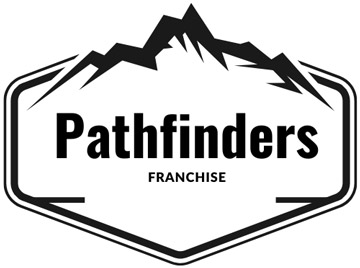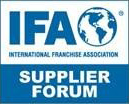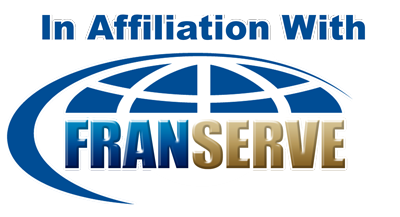Talk the Talk - The language of Franchising

Welcome to Franchising and a whole new language! Below are 20 common terms and acronyms you will hear a lot of moving forward depending on which part of the Game you’re playing during your journey!
GAME 1
1. Franchisor
A Franchisor is the owner of the franchise brand and business system. Franchisors sell a license to their franchise to prospective franchisees in specific (or all) states and internationally.
2. Franchisee
A Franchisee is an individual, group of individuals (partnership), or a business entity that purchases a license carrying the right to operate the Franchisor’s business under specific contractual rules and obligations.
3. Franchise Agreement (FA)
A Franchise Agreement is a document that includes the rights, responsibilities, and obligations of the franchisor to the franchisee and vice versa. It will outline a specific period of time of contract (“term”) of typically 10 years, sometimes more or less.
4. Franchise Disclosure Document (FDD)
A Franchise Disclosure Document is a legal document that a franchisor is legally bound to provide every prospective franchisee. The FDD has a specific form and minimum requirements as set forth by federal law under the Federal Trade Commission. Among its 23 required “Items”, it will detail a Franchisor’s finances, history, contractual obligations for franchisees, as well as expectations on investment cost. It may, or may not, outline its current network’s performance in any number of ways and list all current franchisees in its network.
See: https://smallbiztrends.com/2022/11/franchise-disclosure-document.html
5. Franchise Fee
The Franchise Fee is the fee that needs to be paid to the franchisor immediately after signing the franchise agreement. Sometimes referred to as the license fee or territory fee, the Franchise Fee purchases the right to own a specific territory and operate the Franchisor’s business within it. The Franchise Fee payment is typically paired as part of the execution of the Franchise Agreement.
6. Royalty Fee
The Royalty Fee is a regular payment made to the franchisor on a yearly, monthly, weekly, or daily basis by the franchisee. Typically, it is a set percentage of sales. Royalties are almost always structured as a required, ongoing fee in exchange for the continued right to operate the franchise operation. It also supports the various functions of the corporate office include personnel, technology, new investments, etc.
7. Initial Investment
The Initial Investment, sometimes referred to as Total Project Cost or Project Cost, is the money required for a franchisee to develop and open a location. It typically includes all Franchisor Fees, equipment, personnel, insurance, marketing, and other miscellaneous startup and operating fees. Sometimes it includes the concept of “working capital” and other times it does not. Be sure to clarify when discussing this concept.
See: Business Planning Tools in modules and Google Docs
8. Working Capital
Working capital is a term for cash specifically designed to help a franchise absorb operating expenses (possibly losses) in the first few months or years after opening. Many franchisees reach a “break even” scenario within Year 1, so working capital functions like seed money to cover operating expenses as the business ramps up toward cash flow positivity.
9. Break Even / Cash Flowing / Cash Positivity
These terms are often used interchangeably to identify the point in time in which a franchise begins meeting its operating expenses and no longer requires working capital to cover losses. Typically, this is measured on a month-by-month basis and you will hear discussions of a brand breaking even or “cash flowing” by month 6 or month 10. This means it is cash flow positive by this month, meaning it is bringing in more revenue than it has expenses at this point.
10. Term of Agreement
The Term of Agreement is the duration of franchise agreement ranging from 5 to 20 years. Many Franchise Agreements will feature a renewal term option. If the franchisee is performing well then the franchisor may decide to renew your agreement if you agree to do so.
11. Single-Unit Franchisee, Multi-Unit Franchisee
A single-unit franchisee is a person or group who has purchased a single franchise license/location. A multi-unit franchisee is a person or group who has purchased two or more franchise locations.
12. Area Developer & Area Representative
An Area Developer is a franchisee who has purchased the rights to open multiple franchise units within a certain area and time frame. Different Franchisors have a different minimum number of units to award this designation and the benefits vary widely. An area representative - or sometimes called a Master Franchisee - is less common but is a franchisee who has purchased the rights to a large territory (typically an entire market, region, state, or country). An area representative usually also contracts to act as the Franchisor in their territory and is responsible for recruiting franchisees, training them, and ensuring the Franchisor’s systems are followed.
GAME 2
13. Letter of Intent
The Letter of Intent (LOI) is a non-binding commercial real estate document that outlines basic, high-level business terms for a commercial space lease. Typically, an LOI addresses rental rates, taxes, common area fees, tenant improvement allowance, required deposits, tenant possession dates and use type. The LOI is a first step in a process that leads to a negotiation process of an official, full blow commercial real estate lease.
14. Lease Rates
Landlords typically quote their rental rates in dollars per square foot ($ psf), which is representative of your rent on an annual basis. For example, a 2,500 square foot space may rent for a total of $20 psf. This means the space costs 2,500 sq. ft. x $20 per sq. ft. = $50,000 annually. Thus, $50,000 / 12 months = $4,166 per month.
15. NNN / “Triple-Net”
Landlords may list their spaces as NNN or Triple-Net leases. In this case a triple-net lease (NNN) means the tenant is required to pay a portion - or all - of the taxes, fees, common area, and maintenance fees of the property. In this case, a landlord will outline those individual fees along with the rental rate in the LOI so that you have your “all-in” dollar amount.
16. Tenant Improvement Allowance
Landlords may offer Tenant Improvement Allowance (“TI” or “TIA”) as part of an LOI or lease negotiation. TI is a a cash payment from Landlord to Tenant typically right after the Tenant opens for business. TI is often seen as a recognition by the landlord that you will be investing money to improve their property and they will reimburse some of your buildout cost to take on the lease. TI amounts vary widely and some landlords do not give TI at all. Often the more TI you see you may expect to see the rental rate rise as well and the reverse relationship can often exist. TI is typically quoted in a $ psf like lease rates are. For example you may see a landlord offering $15 psf of TI on a 2,500 sq. ft. space. That means that they are offering 2,500 sq. ft. x $15 = $37,500 in TI. In this scenario the Landlord would write a $37,500 check to the Tenant at an agreed upon time in the Lease.
17. Landlord Concessions
Landlords may negotiate certain concessions such as a reduced rent period, a free rent period, etc. Concessions may come at the expense of other lease items such as rental rates and TI, but can be an important negotiating tactic for some franchise concepts.
GAME 3
18. Key Performance Indicators (KPIs)
Key Performance Indicators are small set of metrics that can be used to assess the health of your business. Many Franchisor’s have identified these for their Franchisees. They are often related to sales performance, customer service measurements, and other measurable metrics of the business. KPIs typically have a direct relationship to revenue performance and can be a good way to make comparisons within the same franchise brand among multiple markets, units, etc.
19. Ramp
Ramp is a term that refers to the length of time it takes a franchise location to achieve break even. The terms comes from revenue plotted on a graph, which - hopefully - “ramps” up and to the right, thus showing growth. A new franchise location may do sales of $15,000 in month 1, $20,00 in month 2, and $45,000 in month 3 at which point it is breaking even (at $45,000 per month). This would be referred to as a 3-month Ramp period.
20. Comps / Comp’ing
Comps is a term that refers to comparable location sales. Typically this is a month-to-month or year-over-year comparison. If a location is said to be “comp’ing” that means it is meeting or exceeding the sale from a similar, previous period. For example, a location that made $50,000 in January last year and made $75,000 in January this year is said to have grown at a 50% comp year over year. This is calculated by taking the difference of present sales and last years sales (($75k - $50k) / $50k) x 100. In general, a franchise location wants to show strong comps in its first 2-3 years. Depending on the brand it may seek to sustain that performance or continue to comp at some annual percentage over time.
2/15/2024


